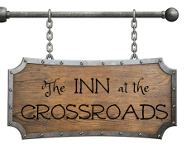
Thoughts:
During the colonial period in America, many early cookbooks made references to “indian” dishes, or “indian meal”. This simply meant dishes that included cornmeal, which was a primary staple food for many native tribes, and a somewhat novel ingredient to the European colonists.
Indian Pudding was essentially the New England counterpart to traditional English steamed puddings. The original puddings called for ingredients such as ground almonds, heavy cream, sugar, rosewater, and so on. The colonial pudding is more modest, making use of what ingredients were more readily available, such as cornmeal and molasses.
The consistency of this pudding, drawn from a 1796 recipe, is more firm than many modern versions of the same dish. I actually like this firmness, as it provides a nice counterpart to the lighter, softer whipped cream. The flavor is very similar to a gingerbread, and I would not have been able to guess that cornmeal was the primary dry ingredient. It’s rich, filling, and flavorful, and can be kept for days- a serious boon around holidays…
Indian Pudding Recipe
Ingredient:
- 3 pints scalded milk
- 1 pint meal
- 2 eggs
- 4 oz. butter
- 1/2 cup sugar or molasses
- 1 tsp. each ground cinnamon and ginger
- heavy cream (optional)
Combine the butter with the warm milk, stirring until it has melted in. Allow to cool, then mix with remaining ingredients in a large bowl. If you have one, pour this mixture into a pudding mold, and place the lid on. If you don’t have a pudding mold, you can use a bowl just large enough to hold the batter. Place a lid of aluminium foil on top. Set the pudding mold into a water bath that comes most of the way up the sides. Bake for two hours at 25oF. Allow to sit for at least 30 minutes before serving.
If you are making this for a holiday, go ahead and make it the day before. Refrigerate, then either allow to come to room temperature, or gently reheat before serving. Scoop into bowls, and pour a little cream over top, or serve with a dollop of slightly sweetened whipped cream. It’s also tasty with vanilla ice cream on the side.




